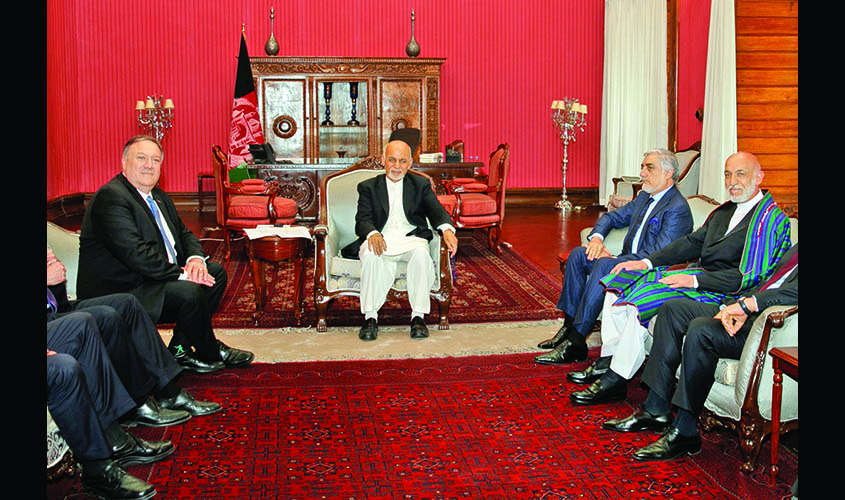Trump is seeking to insert a Trojan horse into Kabul in the shape of Taliban elements backed by Ankara, Doha and Islamabad.
During most of the first two years of his first term as President of the United States, Donald J. Trump embraced the imperative of ensuring that global Wahhabism be prised loose of its leadership role in the Muslim world. While Qatar has remained chained to past doctrines, Saudi Arabia has sought to move away from Wahhabism, despite the tenets of that creed having been intertwined from the very beginnings of perhaps the only state named after a family, the Al Sauds. Given the youthful population of the Kingdom of Saudi Arabia, it is essential that the education imparted to its people reflect the needs and knowledge of the 21st century rather than the 16th, and it is to the credit of Crown Prince Mohammad bin Salman that this is finally being attempted, if in some matters through baby steps, to widespread domestic appreciation. President Trump has stood by the Crown Prince, which is what makes the 45th US President’s abrupt transformation into a cheerleader for a prominent leader of the Wahhabi International, President R.T. Erdogan of Turkey, so much of a mystery. In a foreign policy and security disaster, Trump abandoned the Kurdish fighters who had fought together with US forces to ensure the defeat of ISIS, and is now seeking to insert a Trojan horse into Kabul in the shape of Taliban elements backed by Ankara, Doha and Islamabad. What was once a unified group is now, in effect, divided into three groups, of which the segment which is being portrayed by Islamabad as representing the entire Taliban is the weakest on the ground, despite being financially the strongest. Meanwhile, the Afghan National Army (ANA) is growing in manpower and capabilities, and the “peace agreement” designed by Zalmay Khalilzad, with the assistance of GHQ Rawalpindi, is in actuality a “Pieces Agreement” that will shred the Afghan government in Kabul into factions whose rivalry will destroy any chance of peace in Afghanistan. President Ghani is being nudged to go the Najibullah way, by agreeing to the one-sided conditions of the Pieces Deal, including the release of nearly 6,000 hardcore Taliban fighters captured at great human cost by the ANA. Their release will shatter the morale of the only legitimate army in the country, and one that the international community should be backing rather than sabotaging. Decades of experience ought to have taught Washington and the NATO command in Brussels of the folly of expecting the Taliban to adhere to the terms of any agreement, yet once again a leap of credulity has taken place. All that President Trump wishes to achieve is to reduce to zero the number of US casualties in Afghanistan during an election year. If such a process leads to heightened bloodshed and chaos in Afghanistan, the calculation is that such mayhem would not have the same negative impact on US voters as even a few returning body bags of US soldiers would.
The scurrying away from the Kurds and now the Afghans reveals an unmistakable—and broad—peacenik streak within the White House. Once again, it has been demonstrated that Trump’s tough talk over Afghanistan is merely camouflage for a policy little different from that of Mikhail Gorbachev during his years in power, which was to avoid supporting the use of the military
The betrayal of the Afghan people is by those who are aware that their surrender is to extremists who seek to deny any education or gainful occupation at all to women. Their surrender is to a congeries of militias that severally seek to enforce a Wahhabi version of the Spanish Inquisition. A force that the ANA could defeat in a year, were it given the means to do so. It is fortunate for the world that today’s leaders were not in mindset the wartime Heads of Government in the US or the UK during 1940, or these countries would have sought to surrender most of Europe to the Germans the way they are doing with the Afghans, a people who made the error of trusting in US-EU promises.

